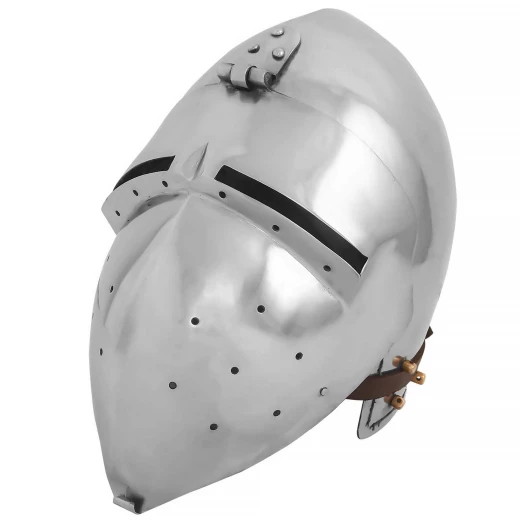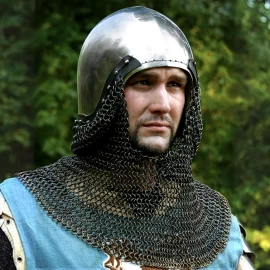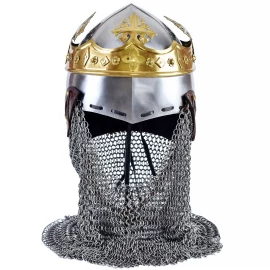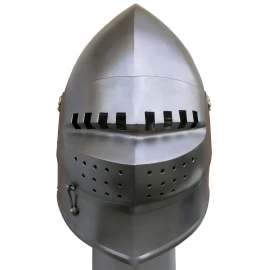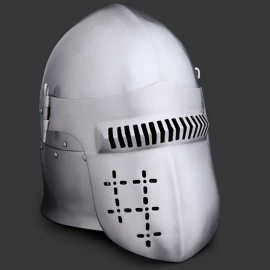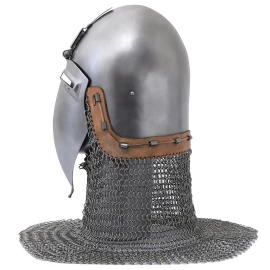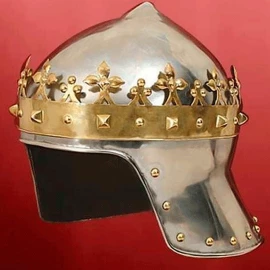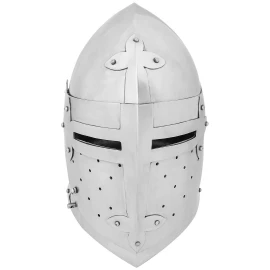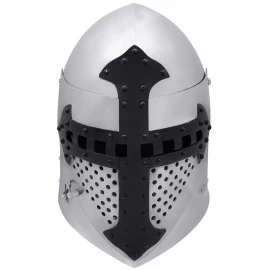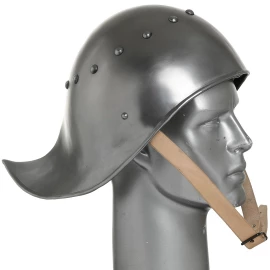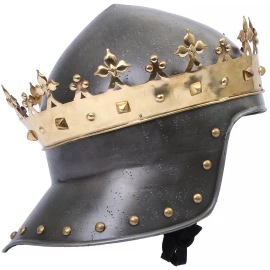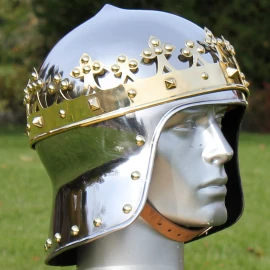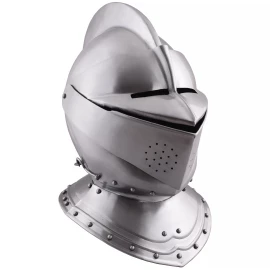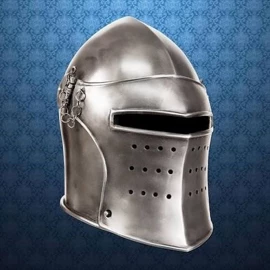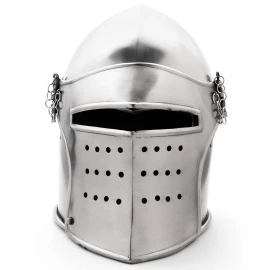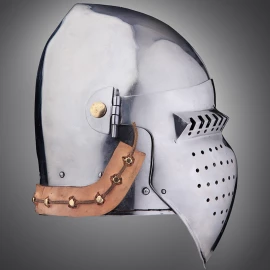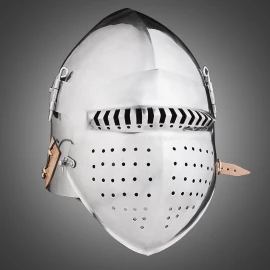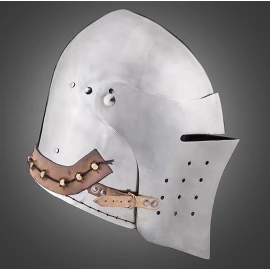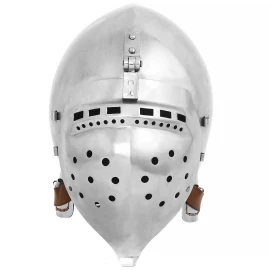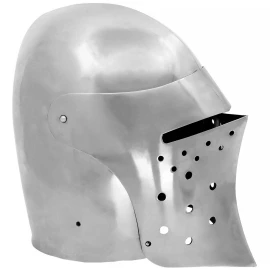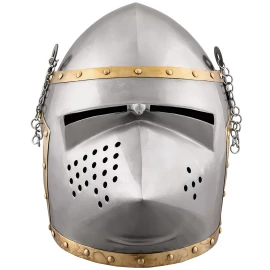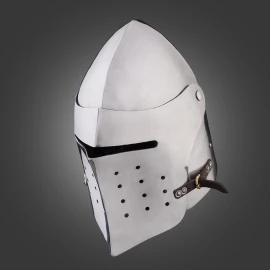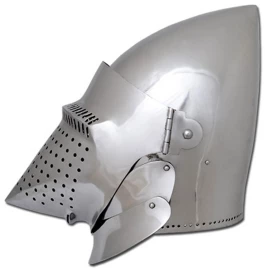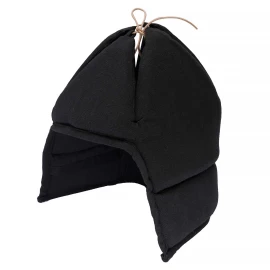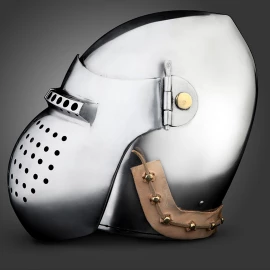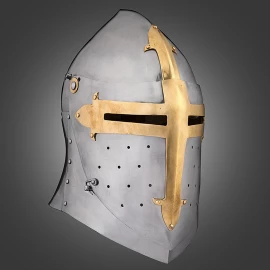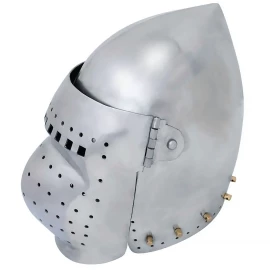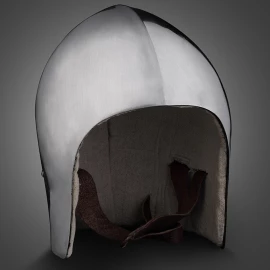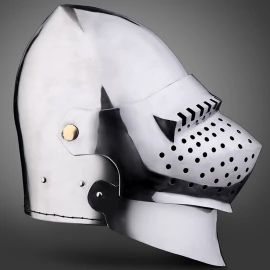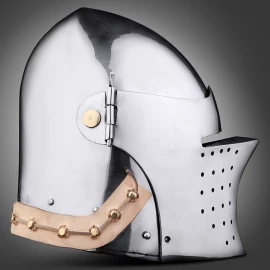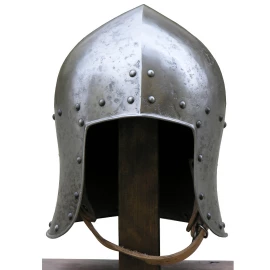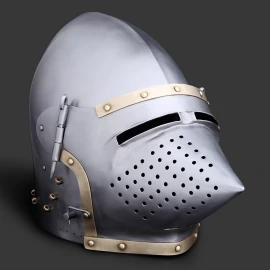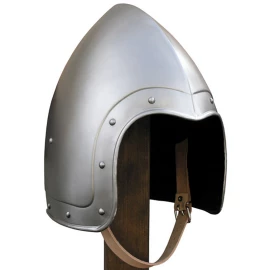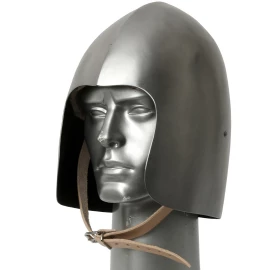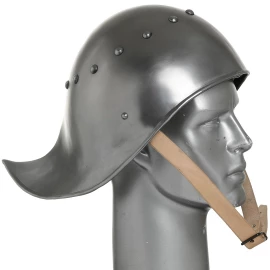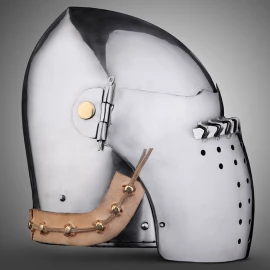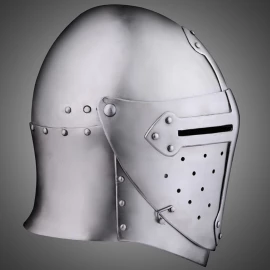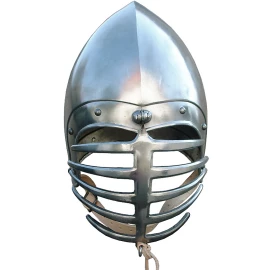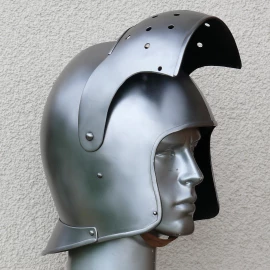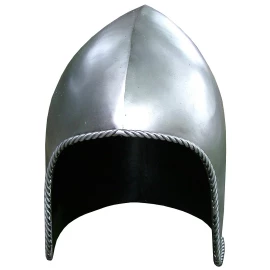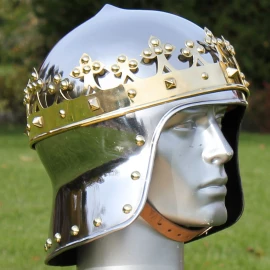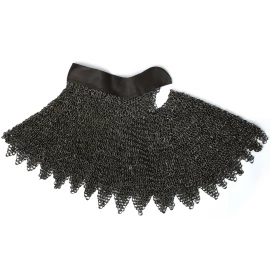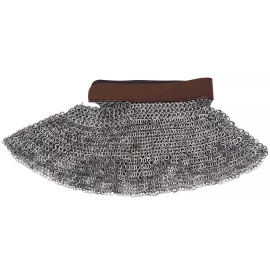Klappvisor Bascinet 14th - 15th Century
1xThis type of centrally mounted visor on the hinge was popular in Germany and northern Italy in the 14th century. However, this attachment of visors also occurs on other helmets of the 15th century. The visor plate is shaped so that the blade blows slide on it so that the helmet does not have to absorb the full kinetic energy of the stroke. More information...
Klappvisor Bascinet 14th - 15th Century
Suitable for reenactment from the 14th and 15th century. This helmet has brass fasteners (Vervelles) for attaching the aventail and a leather strap for attaching the visor in the folded down position. The fabric lining is adjustable by a leather cord. The aventail is not included in the delivery.
The large inner circumference of the bell is designed so that a heavily padded hood can be used to dampen the blows aimed at the head. The inside of the helmet is sprayed with black paint to prevent corrosion.
- Material thickness approx. 1.6 mm = 16 gauge steel
- Thick textile lining
- Total height of about 28 cm
- Width from side to side approximately 180 mm
- The peepholes measure approx. 100 x 13 mm
- Weight 2729 g
- Circumference of the helmet bowl inside approx. 67 cm
The bascinet with a klappvisor is a type of helmet popular in Europe during the Middle Ages.
Where and When was it Used?
- Europe: The bascinet helmet was widely used across Europe, from the western regions to the east and south of the continent.
- High and Late Middle Ages: Its peak popularity occurred during the 14th and 15th centuries, a period marked by the Hundred Years' War and other conflicts.
Key Features of the Bascinet with a Klappvisor:
- Rounded or Conical Skull (Basic Bascinet Shape): Provided effective protection for the head.
- Hinged Visor (Klappvisor): Allowed the wearer to open the visor for improved visibility in combat or close it for maximum protection. Klappvisors often had multiple parts and various mechanisms.
- Mail Protection for the Neck (Aventail): Frequently attached to the bascinet, safeguarding the neck and shoulders.
- Material: Usually made of steel.
Bascinets evolved over time and had different styles. The klappvisor was one type of visor that appeared on bascinets. The bascinet was often worn with other armour, such as mail or plate armour. It was a favourite among knights and other fighters due to its good protection and relative comfort.
A high-quality product made by Lord Of Battles®
We are here for you


